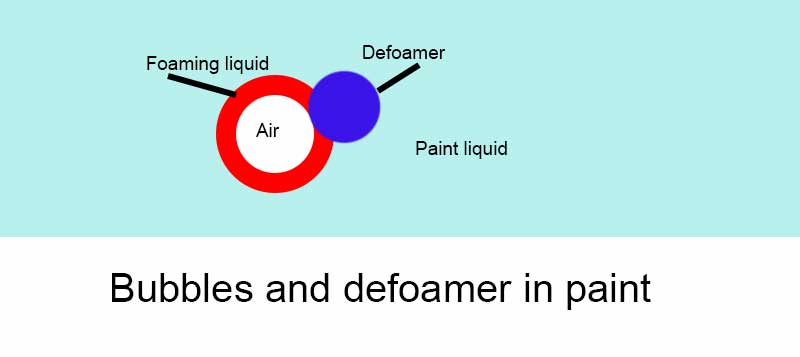The Importance of Defoamers in Industrial Processes and Applications
The Function of Defoamers in Enhancing Product Quality and Efficiency
Defoamers offer as crucial additives that alleviate this concern, guaranteeing smoother manufacturing operations while enhancing the aesthetic and useful attributes of the last items. The selection of the suitable defoamer can be important to attaining optimum outcomes, raising important concerns regarding formula compatibility and efficiency metrics that merit further exploration.
Understanding Defoamers
Understanding the role of defoamers is crucial for keeping item top quality throughout numerous industries. Defoamers are chemical additives designed to prevent the development and reduce of foam in liquid systems, which can detrimentally impact processes such as mixing, filling, and surface stress. Lathering can result in ineffectiveness, product problems, and jeopardized visual charm, making defoamers an essential part in producing operations.
In industrial applications, defoamers aid to boost product consistency and stability. As an example, in the paint and coverings sector, foam can conflict with the application process and the final finish. In food and beverage manufacturing, extreme foam can hinder bottling and product packaging performance. The effective use defoamers not only ensures smoother manufacturing processes however also adds to remarkable product efficiency.
Moreover, the option and solution of a defoamer must line up with details application demands, such as compatibility with other components, performance under varying temperature level and pH conditions, and prospective governing restrictions. Inevitably, comprehending defoamers' functions and their value in numerous formulations is critical for maximizing production and making certain the best end items.
Kinds Of Defoamers
Defoamers can be categorized into a number of kinds based upon their make-up and mechanism of action. The main kinds consist of silicone-based, non-silicone natural, and inorganic defoamers.
Silicone-based defoamers are among the most efficient, largely due to their capability to spread rapidly on the liquid surface area and interrupt foam development. Their one-of-a-kind chemical structure permits remarkable stability, making them ideal for high-temperature applications and settings with differing pH degrees.
Non-silicone organic defoamers, frequently composed of natural oils or fatty acids, are valued for their biodegradability and lower poisoning. These are generally utilized in food and beverage applications where safety and environmental influence are extremely important.
Not natural defoamers, which consist of materials like talc or calcium carbonate, act by enhancing the thickness of the liquid, thus minimizing foam stability. They are commonly made use of in commercial procedures where compatibility with other materials is not a problem.
Each kind of defoamer has unique advantages and limitations, enabling customized services depending upon the specific frothing concerns encountered in numerous applications. Comprehending these differences is crucial for optimizing performance and attaining wanted product quality.
Applications Throughout Industries
Numerous sectors take advantage of defoamers to enhance item high quality and functional effectiveness. In the food and beverage market, defoamers are important in processes such as brewing and milk production to avoid foam development, which can result in inefficiencies and item variance. By controlling foam, suppliers can make sure much better yield and a much more uniform item.
In the pharmaceutical industry, defoamers play an essential duty in the formulation of fluid medications, where too much foam can hamper mixing and exact dosing. Their usage aids preserve the integrity of the solutions and helps with smoother manufacturing processes.
The paint and finishes market additionally depends on defoamers to boost the performance of products throughout application. By reducing foam, these ingredients ensure a smoother surface and boost the aesthetic top qualities of the final item.

Benefits of Using Defoamers
While the application of defoamers varies throughout sectors, their advantages continually boost item quality and process effectiveness. One substantial benefit is the reduction of foam development throughout producing processes, which can or else result in production delays and disparities in product top quality. By decreasing foam, defoamers make it possible for a smoother circulation of materials, helping with much more efficient operations and decreasing the likelihood of equipment breakdowns.
Furthermore, making use of defoamers can enhance the appearance and texture of end products. In sectors such as finishings, paints, and food handling, excessive foam can endanger the visual aesthetic appeals and total high quality, while the suitable defoamer application makes sure a consistent finish and desirable attributes. In addition, defoamers can add to cost savings by reducing waste during production and enhancing using basic materials (defoamers).

Selecting the Right Defoamer
Choosing the appropriate defoamer is critical for optimizing manufacturing procedures and ensuring item top quality. The selection of defoamer affects not only the effectiveness of foam control but also the overall efficiency features of the end product. Factors to take into consideration consist of the kind of application, the chemistry of the formulation, and the ecological problems under which the product will be made use of.
Various markets may need certain defoamer types, such as silicone-based, natural, or polymeric defoamers. Recognizing the compatibility of the defoamer with the main ingredients is necessary to prevent adverse responses that might compromise product integrity. In addition, the defoamer's efficiency in various temperature levels and pH levels should be evaluated to make certain constant efficiency.
Examining the defoamer in small-scale applications can give important understandings right into its efficiency and viability. Consideration of governing compliance, particularly in food, pharmaceuticals, and cosmetics, is paramount in choosing a defoamer. Ultimately, a detailed assessment of these aspects will certainly bring about the choice of a defoamer that not just controls foam efficiently yet also boosts the high quality and efficiency of the last product.
Final Thought

In verdict, defoamers are crucial ingredients that considerably enhance product high quality and efficiency throughout numerous sectors. The calculated selection and application of defoamers lead to cost savings, maximized source use, and increased consumer contentment.
Lathering can lead to inadequacies, item flaws, and compromised visual charm, find out here now making defoamers a vital component in producing operations.
